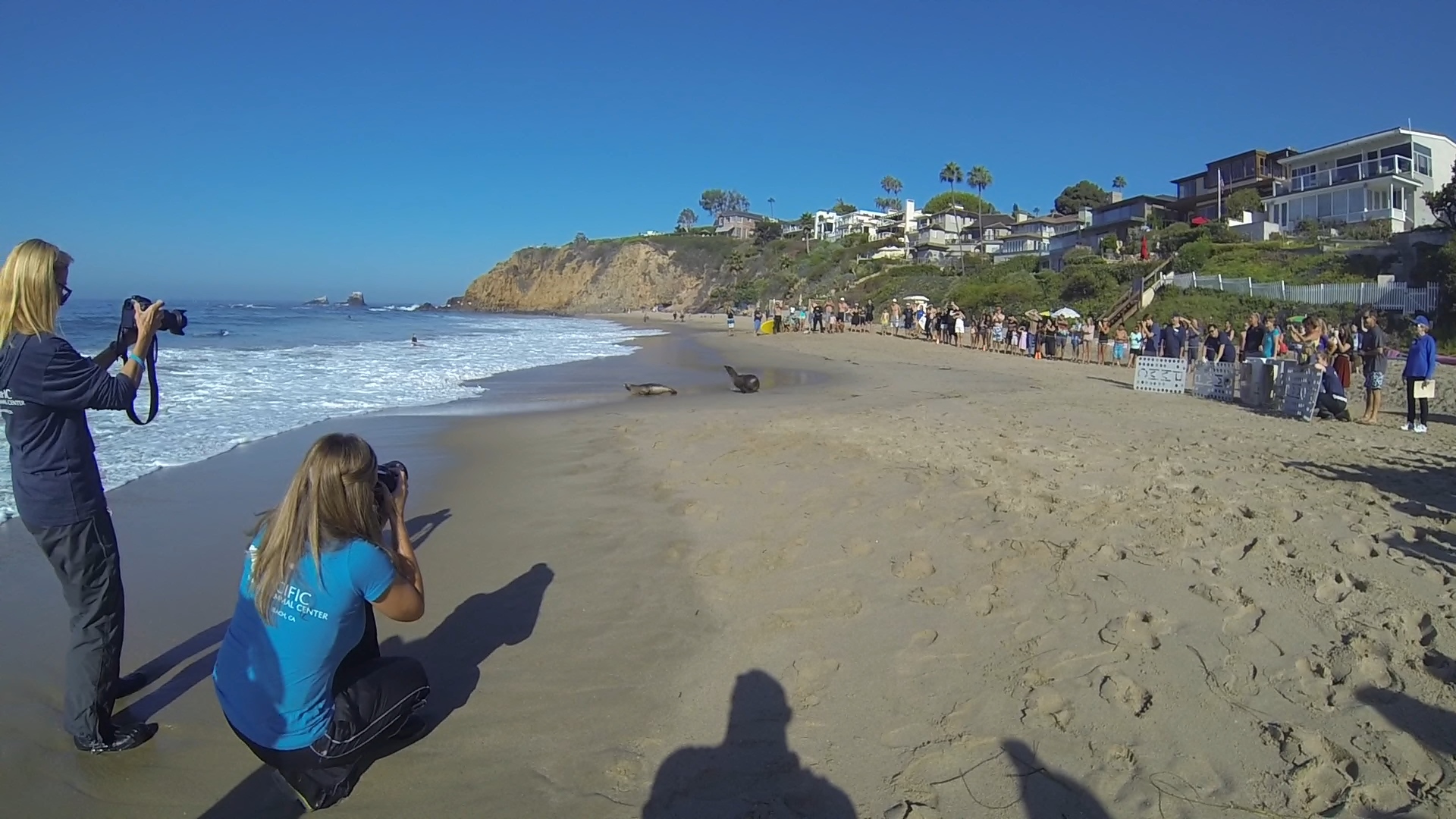by guest blogger John Heimann
This last September, Keith Matassa, marine biologist and executive director of The Pacific Marine Mammal Center (PMMC), invited me to take part in the release of two rehabilitated California sea lions at Crescent Bay in Laguna Beach, California. Both Ryby and Adaleide were brought into PMMC in April, suffering from malnutrition and dehydration. They each weighed a meager 23 pounds when the rescue team brought them in for treatment, and each was on tube feeding for at least two weeks before moving on to a steady fish diet. On the date of their release, Ryby weighed in at 68 pounds, and Adaleide weighed 67 pounds. They looked beautiful and strong on this warm Sunday morning as they bolted from their travel cages to their home in the Pacific. Some people may think that animals cannot feel emotions, but let me tell you, friends…these two sea lions were visibly elated when they felt the cold ocean water on their bodies. They playfully jumped through the surf and looked back toward the beach as if to show their gratitude for the hard work put forth by the PMMC team. It was an amazing experience, and I must admit that I was a bit emotional myself.
After the release, Matassa invited me to take a behind-the-scenes tour of the PMMC facility. Built in the 1950s, the big red barn was used by the SPCA to house a variety of land animals until 1972, when the barn was given to Jim Stauffer and John Cunningham, the founders of Friends of the Sea Lion, by the City of Laguna Beach. The men, with the help of some friends and volunteers, converted the old barn into a facility where they could properly care for these animals. And so the PMMC was born, with the mission to rescue, rehabilitate, and release marine mammals. Over 40 years later, with its multiple filtered pools, food-prep station, full medical facility and on-duty veterinarian, the PMMC takes pride in its successful rehabilitation of over 8,000 animals. Less than 1 percent of its rehabbed animals return to the PMMC after their release into the natural environment. Michele Hunter, director of animal care, attributes this incredibly low return rate to the individual care that each animal receives during its 3- to 6-month stay at the facility. Hunter has dedicated 25 years of her life to the PMMC, and it’s evident that she’s still very passionate about the work that they do here. As I stood in that old barn, with the smell of fish hanging heavy in the air, I asked Keith and Michele how a nonprofit organization like this can stay successful for so long. They said nothing about the endless days and tireless years of hard work that they’ve spent keeping the facility on its feet, focusing rather on the dedication of their volunteers and support from the city and great residents of Laguna Beach.

As divers, many of us are looking for ways to contribute to conservation of the ocean and its residents. At the PMMC, there are several ways that you can help. You can visit the facility from 10 to 4 each day, and help spread the word about the great work they do here; volunteer (applications are on the website); donate. Even if you aren’t in Southern California, PMMC gratefully accepts donations to help fund their education program, much-needed food for the animals, and plans for expanding the facility to accommodate more animals. Visit pacificmmc.org to check out the amazing work they’re doing. I’ve seen it first hand, friends, and we really can make a difference.

